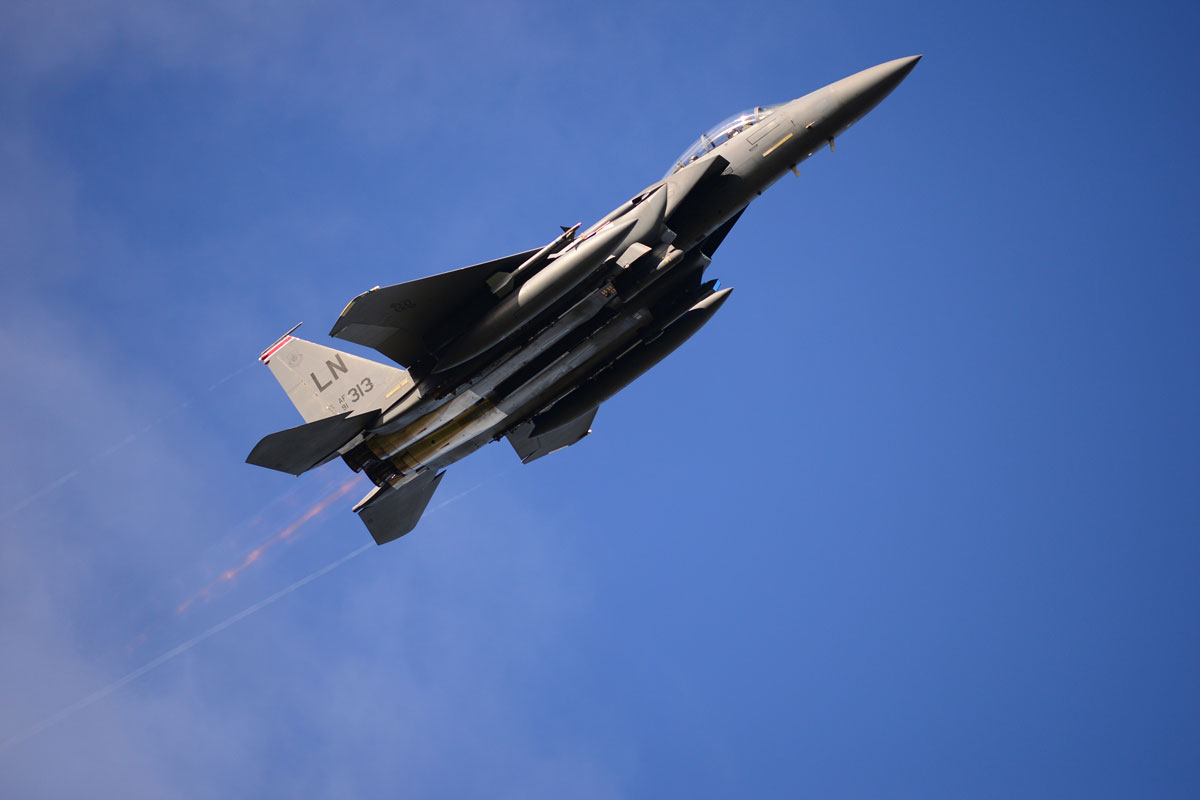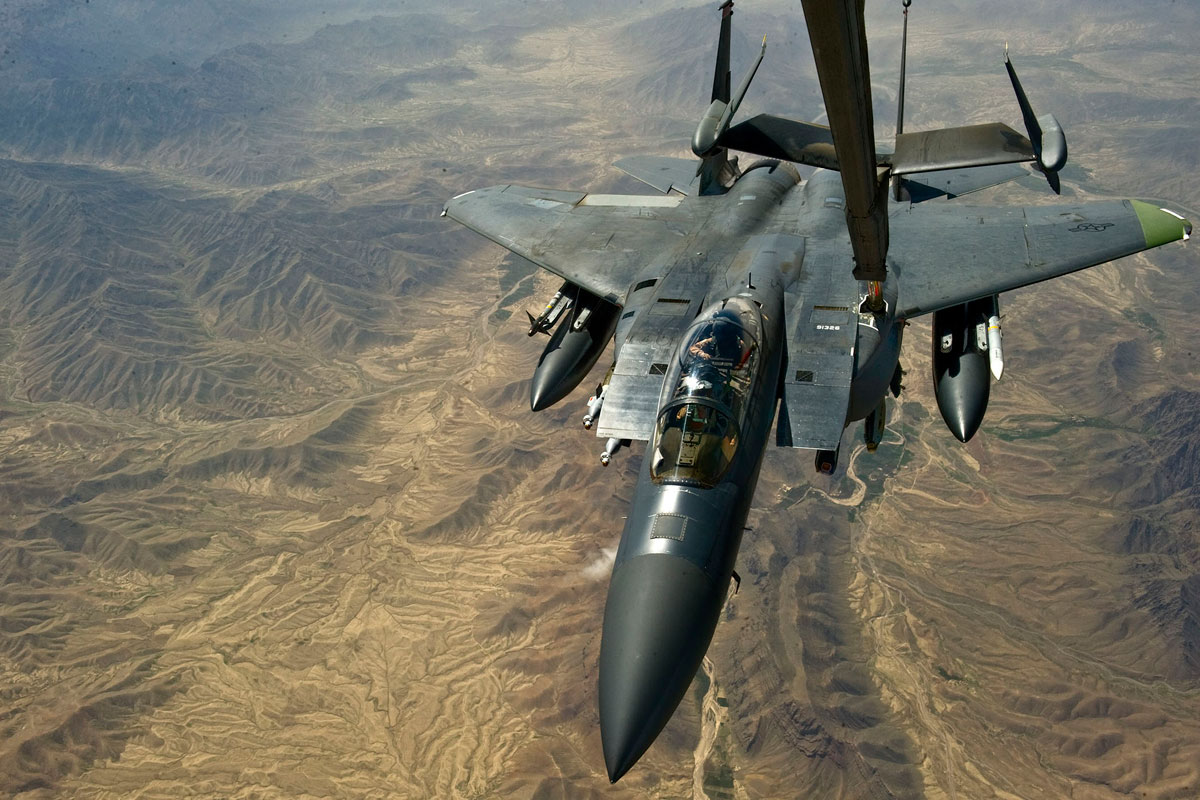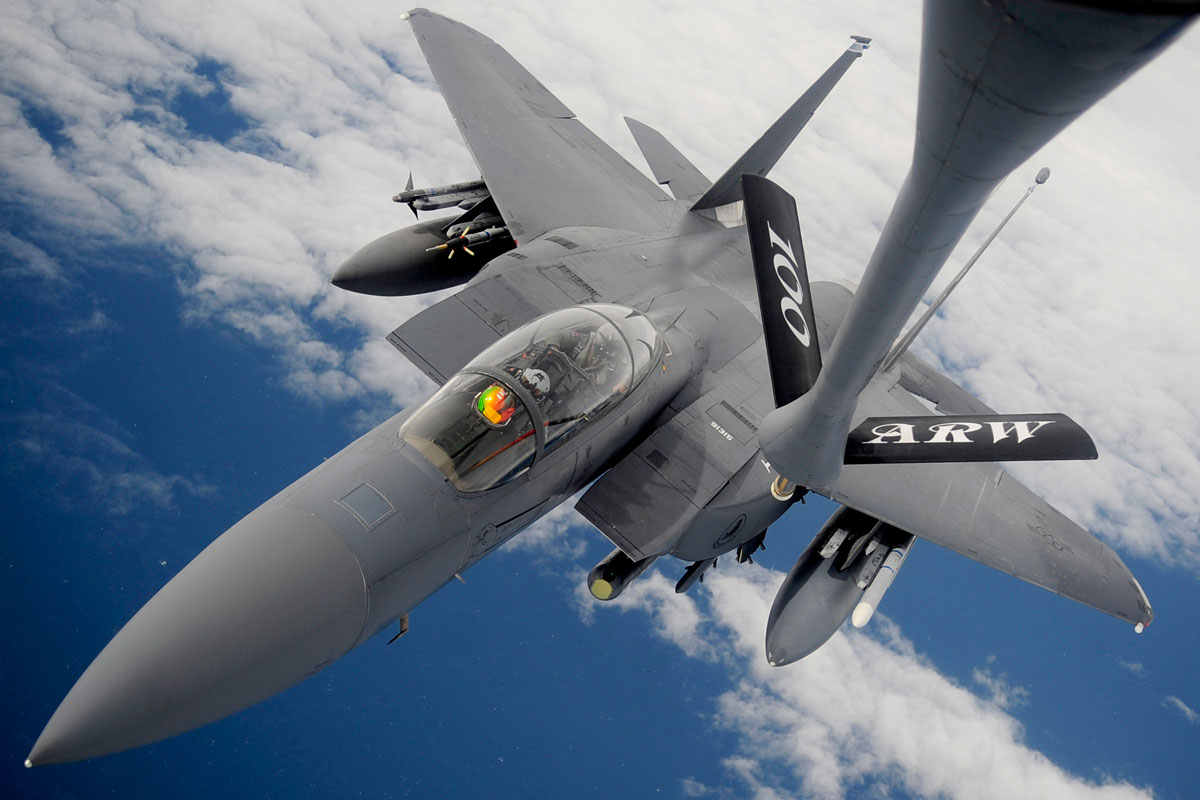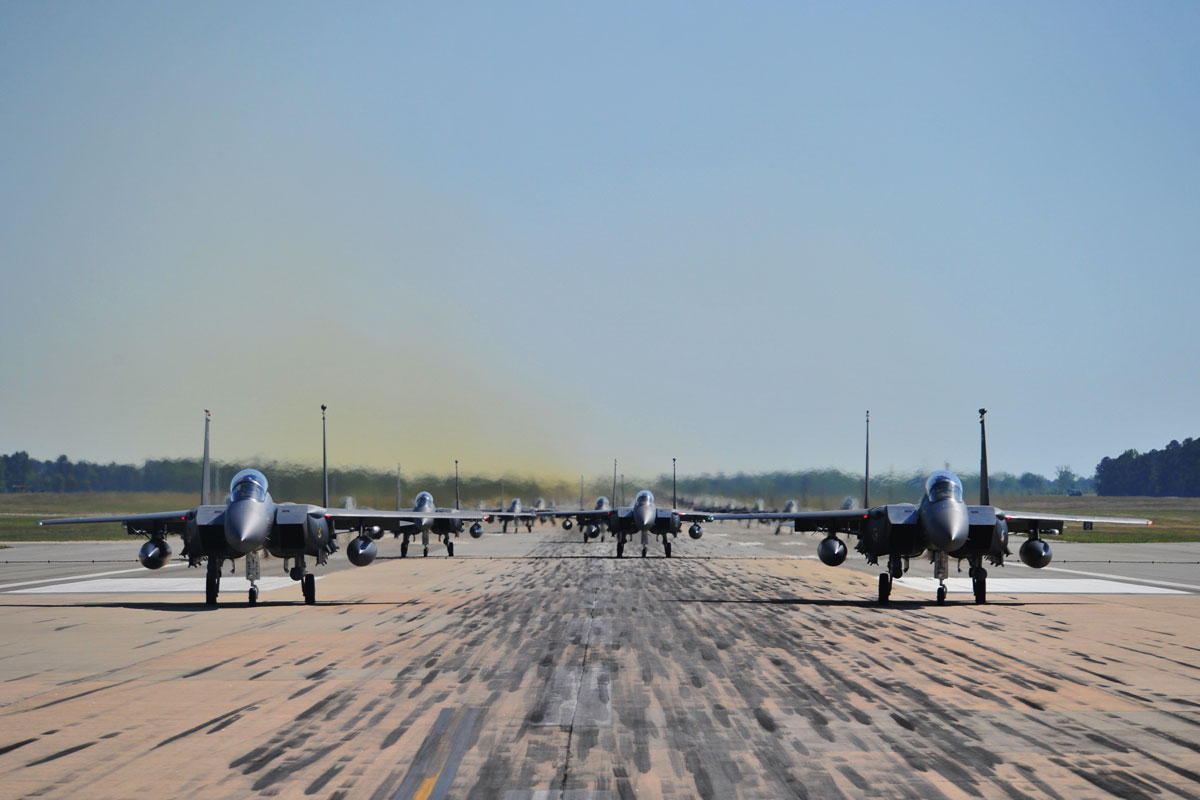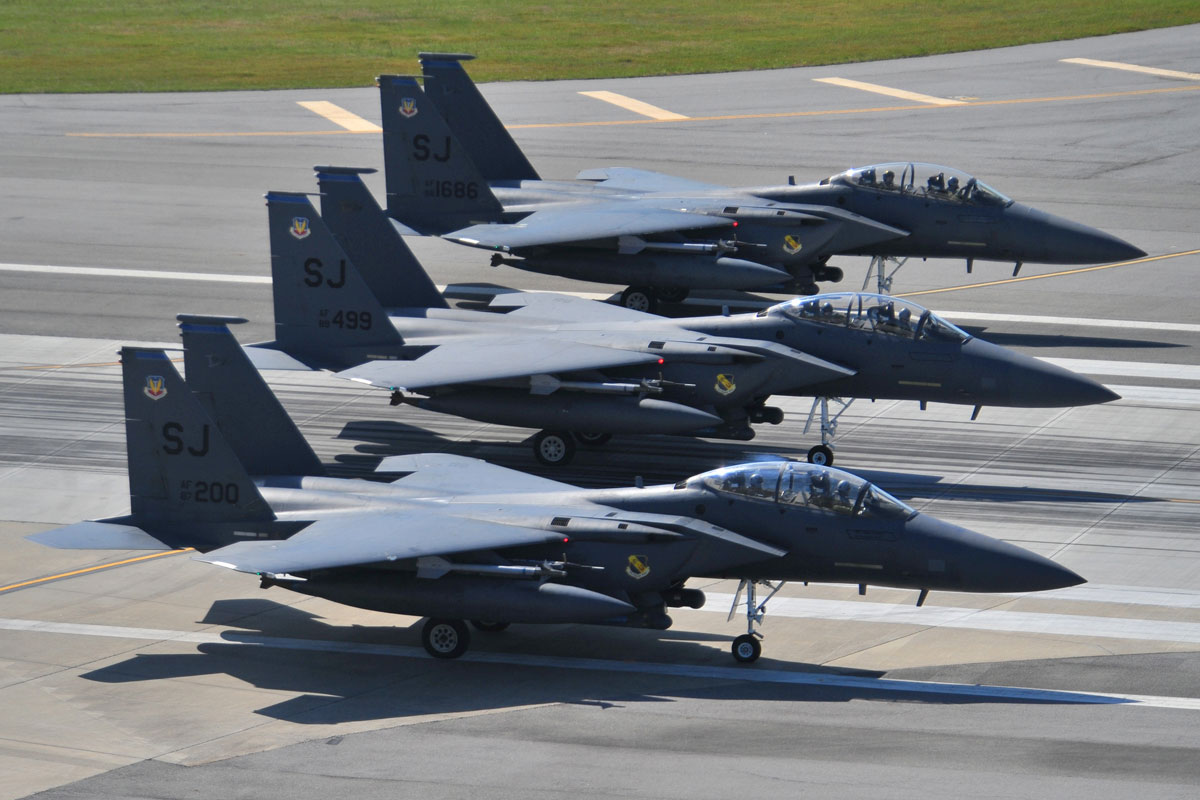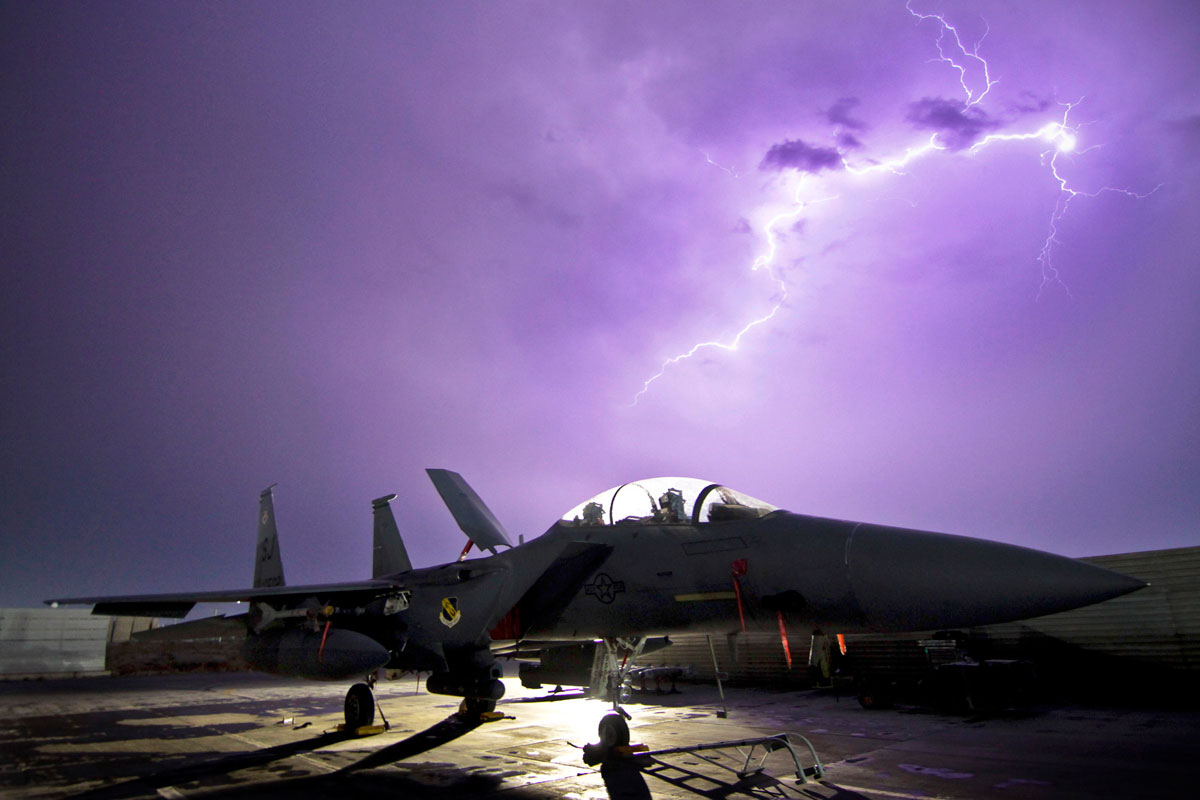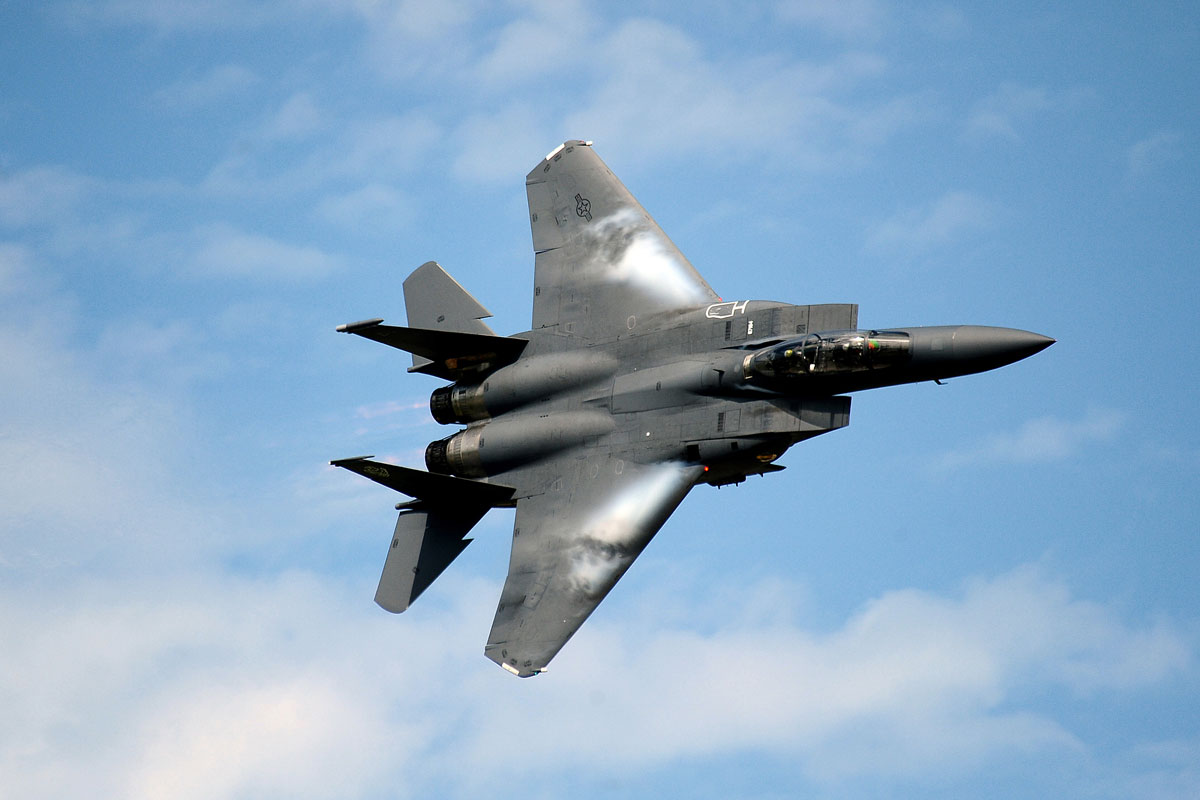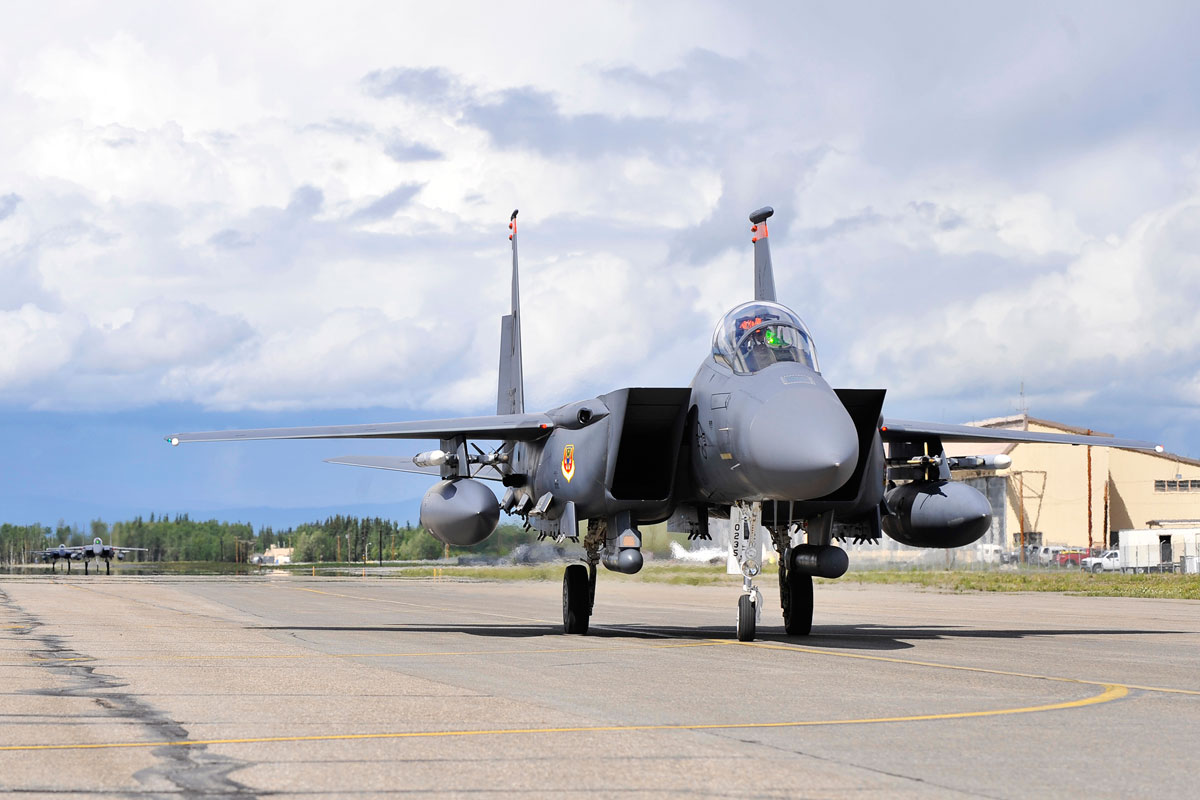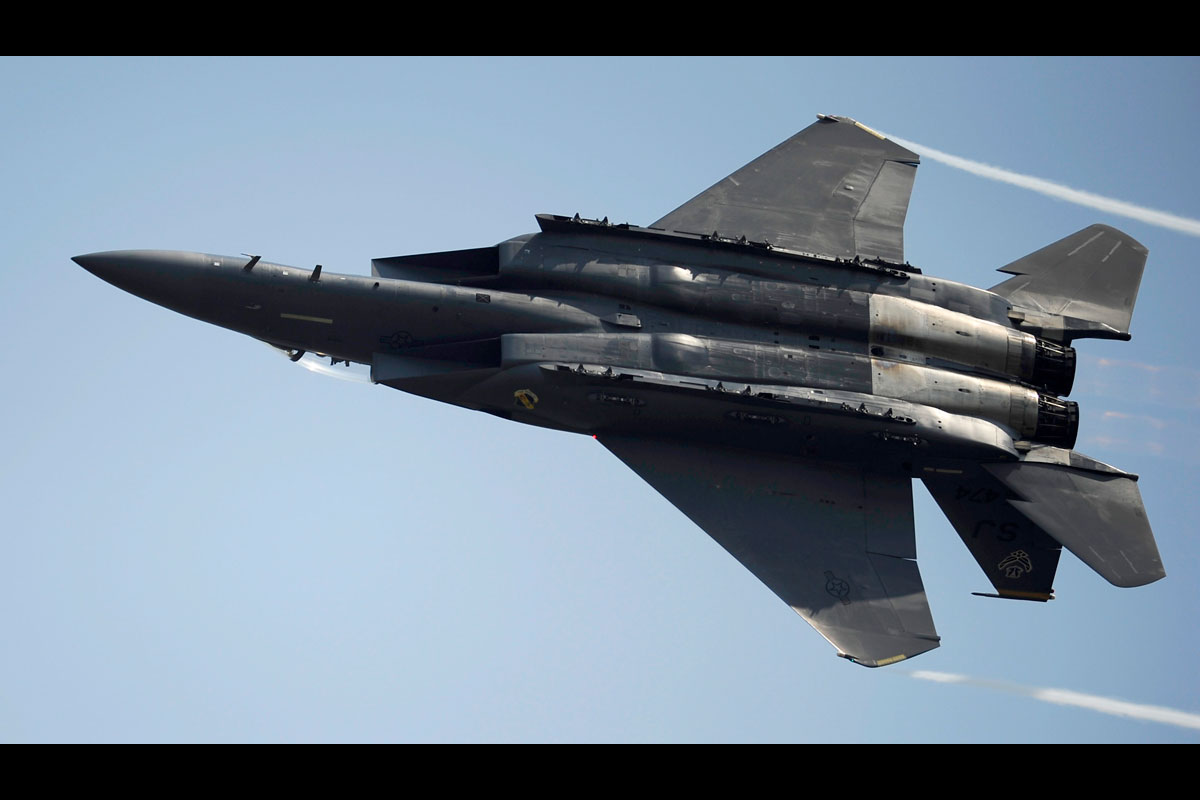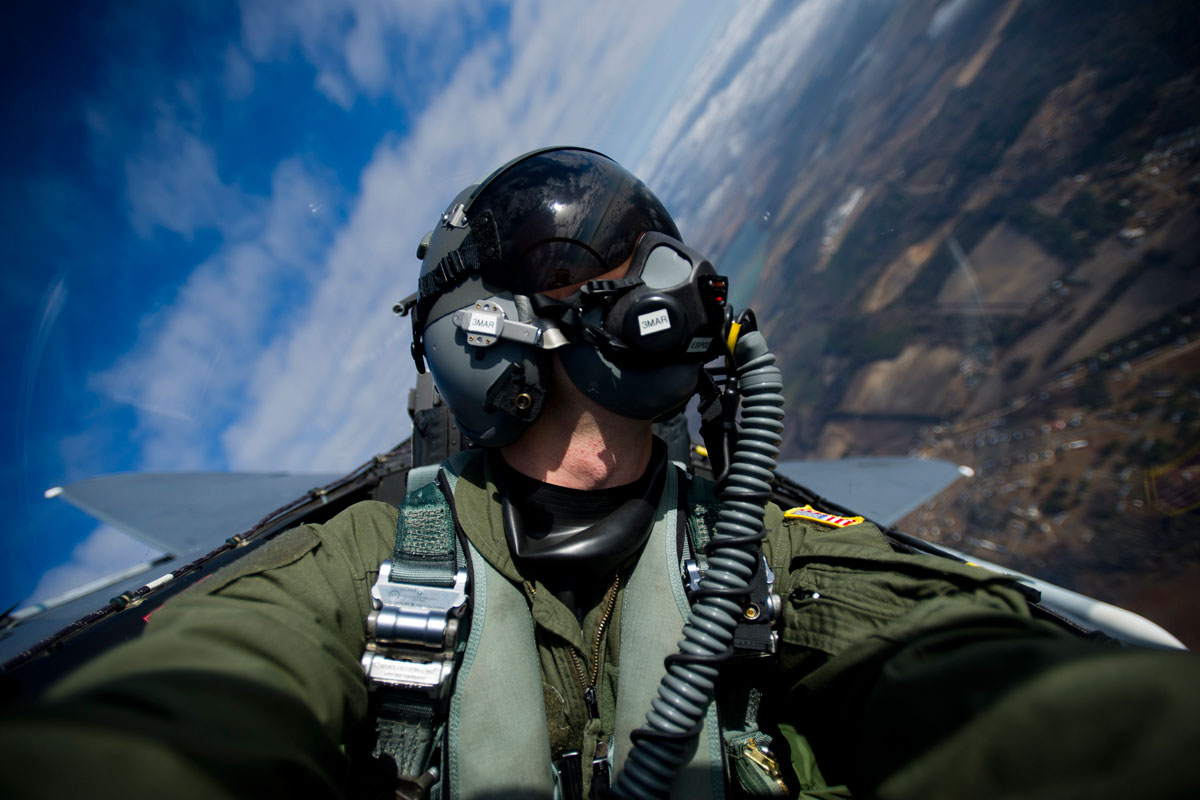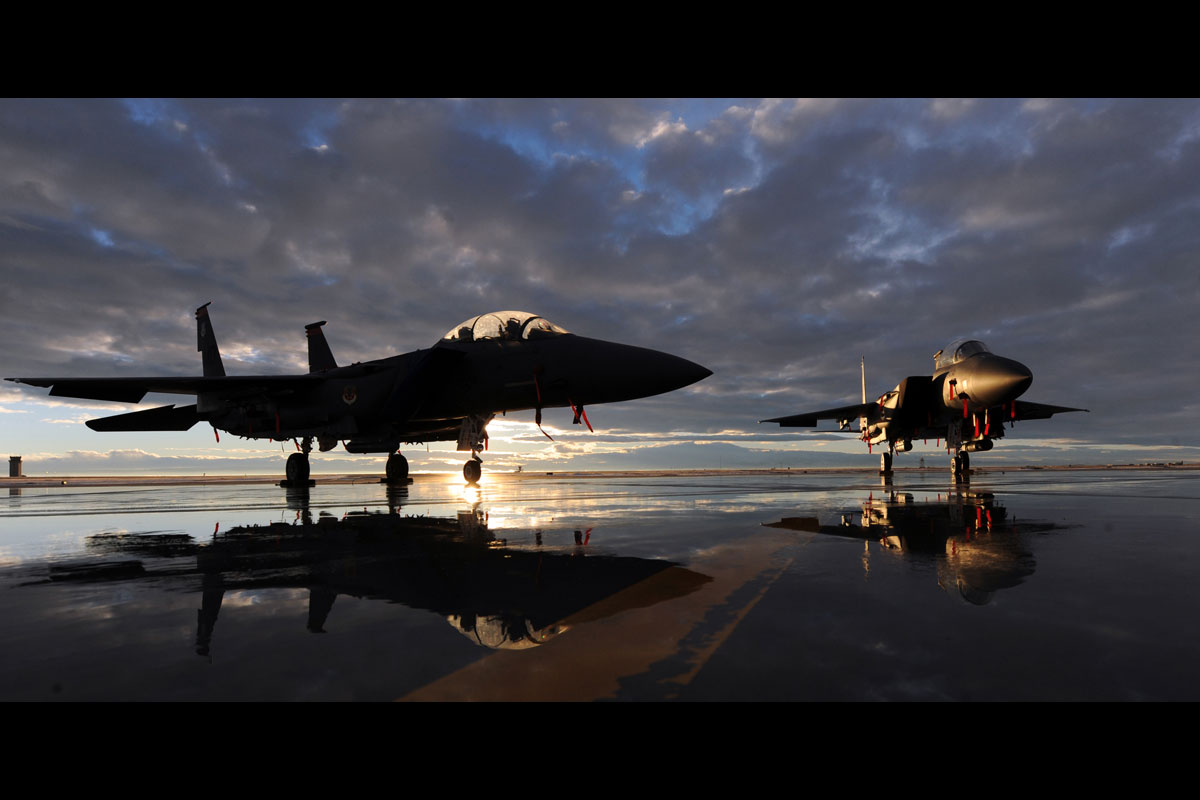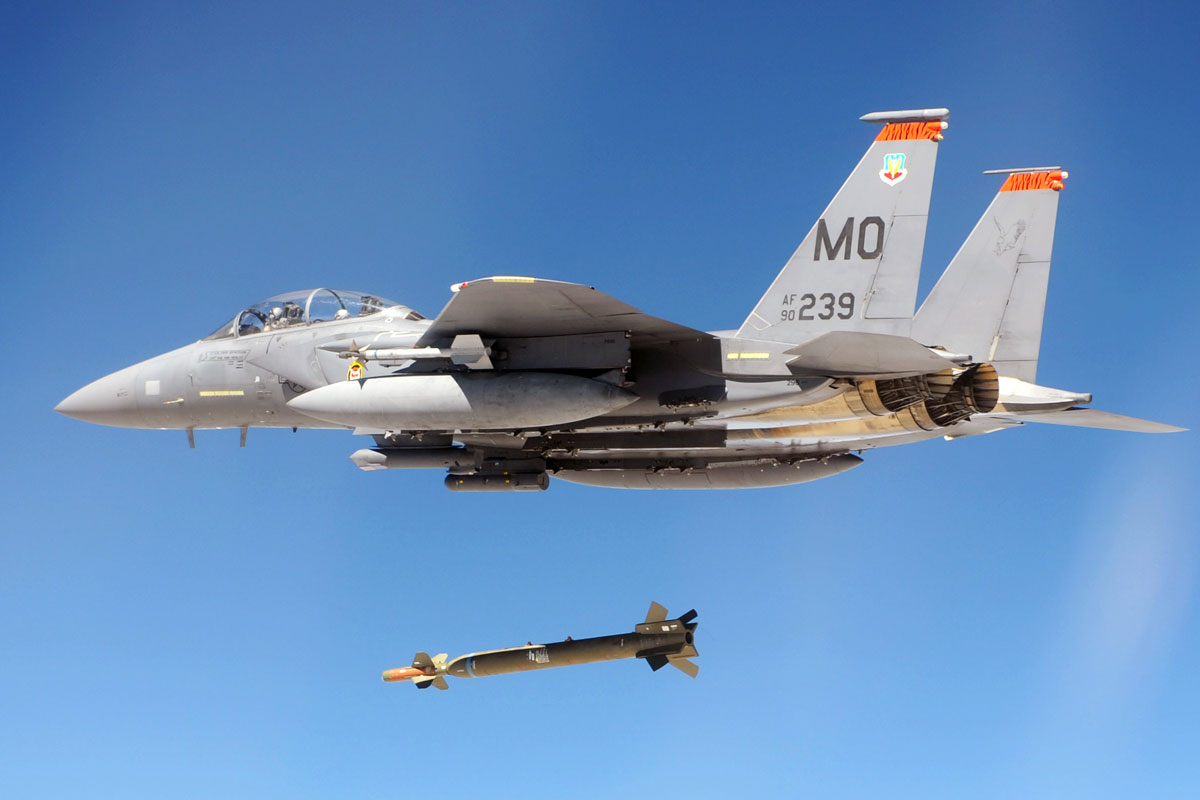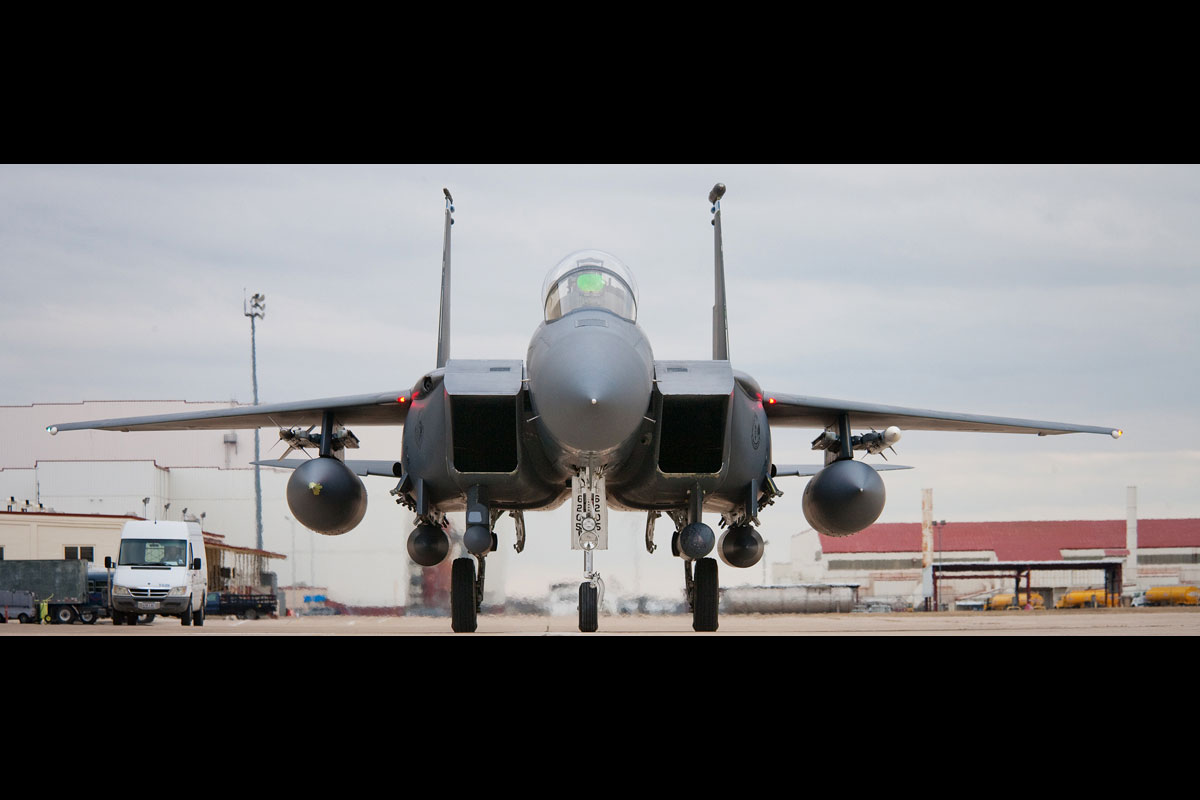Manufacturer: The Boeing Company
Service: USAF Armament: 20mm cannon; 4x AIM-9 Sidewinder; 4x AIM-120 AMRAAM; 8x AIM-120 AMRAAM Propulsion: Two Pratt & Whitney F100-PW-220 or 229 turbofan engines with afterburners Speed: 1,875 mph (Mach 2.5) Range: 2,400 miles Crew: Pilot and weapon systems officerThe two-seater version of the F-15 Eagle, the F-15E Strike Eagle is one of the U.S. Air Force’s most successful -- and deadly -- tactical ground attack aircraft in its inventory.
It has the capability to fight its way to a target over long ranges, destroy enemy ground positions and fight its way out.
The aircraft's navigation system uses a laser gyro and a Global Positioning System to continuously monitor the aircraft's position and provide information to the central computer and other systems, including a digital moving map in both cockpits.
The APG-70 radar system allows aircrews to detect ground targets from long ranges. One feature of this system is that after a sweep of a target area, the crew freezes the air-to-ground map then goes back into air-to-air mode to clear for air threats. During the air-to-surface weapon delivery, the pilot is capable of detecting, targeting and engaging air-to-air targets while the WSO designates the ground target.
The low-altitude navigation and targeting infrared for night, or LANTIRN, system allows the aircraft to fly at low altitudes, at night and in any weather conditions, to attack ground targets with a variety of precision-guided and unguided weapons. The LANTIRN system gives the F-15E unequaled accuracy in weapons delivery day or night and in poor weather, and consists of two pods attached to the exterior of the aircraft.
The navigation pod contains terrain-following radar which allows the pilot to safely fly at a very low altitude following cues displayed on a heads up display. This system also can be coupled to the aircraft's autopilot to provide "hands off" terrain-following capability.
The targeting pod contains a laser designator and a tracking system that mark an enemy for destruction at long ranges. Once tracking has been started, targeting information is automatically handed off to GPS or laser-guided bombs.
One of the most important additions to the F-15E is the rear cockpit, and the weapons systems officer. On four screens, this officer can display information from the radar, electronic warfare or infrared sensors, monitor aircraft or weapons status and possible threats, select targets, and use an electronic "moving map" to navigate. Two hand controls are used to select new displays and to refine targeting information. Displays can be moved from one screen to another, chosen from a "menu" of display options.
In addition to three similar screens in the front seat, the pilot has a transparent glass heads up display at eye level that displays vital flight and tactical information. The pilot doesn't need to look down into the cockpit, for example, to check weapon status. At night, the screen is even more important because it displays a video picture nearly identical to a daylight view of the world generated by the forward-looking infrared sensor.
The F-15E is powered by two Pratt & Whitney F100-PW-220 or 229 engines that incorporate advanced digital technology for improved performance. For example, with a digital electronic engine control system, F-15E pilots can accelerate from idle power to maximum afterburner in less than four seconds, a 40 percent improvement over the previous engine control system. Faster engine acceleration means quicker takeoffs and crisper response while maneuvering. The F100-PW-220 engines can produce 50,000 pounds of thrust (25,000 each) and the F100-PW-229 engines 58,000 pounds of thrust (29,000 each).
Each of the low-drag conformal fuel tanks that hug the F-15E's fuselage can carry 750 gallons of fuel. The tanks hold weapons on short pylons rather than conventional weapon racks, reducing drag and further extending the range of the Strike Eagle.
For air-to-ground missions, the F-15E can carry most weapons in the Air Force inventory. It also can be armed with AIM-9M Sidewinders or AIM-120 advanced medium range air-to-air missiles, or AMRAAM for the air-to-air role. The "E" model also has an internally mounted 20mm gun that can carry up to 500 rounds.
The F-15's superior maneuverability and acceleration are achieved through its high engine thrust-to-weight ratio and low-wing loading. It was the first U.S. operational aircraft whose engines' thrust exceeded the plane's loaded weight, permitting it to accelerate even while in vertical climb. Low-wing loading (the ratio of aircraft weight to its wing area) is a vital factor in maneuverability and, combined with the high thrust-to-weight ratio, enables the aircraft to turn tightly without losing airspeed.
The first flight of the F-15A was made in July 1972. In November 1974, the first Eagle was delivered to the 58th Tactical Fighter Training Wing at Luke Air Force Base, Ariz., where training began in both F-15A and B aircraft. In January 1976, the first F-15 destined for a combat squadron was delivered to the 1st Tactical Fighter Wing at Langley AFB, Va.
The single-seat F-15C and two-seat F-15D models entered the Air Force inventory in 1979 and were first delivered to Kadena Air Base, Japan. These models were equipped with production Eagle package improvements, including 2,000 pounds of additional internal fuel, provisions for carrying exterior conformal fuel tanks, and increased maximum takeoff weight of 68,000 pounds.
The first production model of the F-15E was delivered to the 405th Tactical Training Wing, Luke AFB, Ariz., in April 1988.
